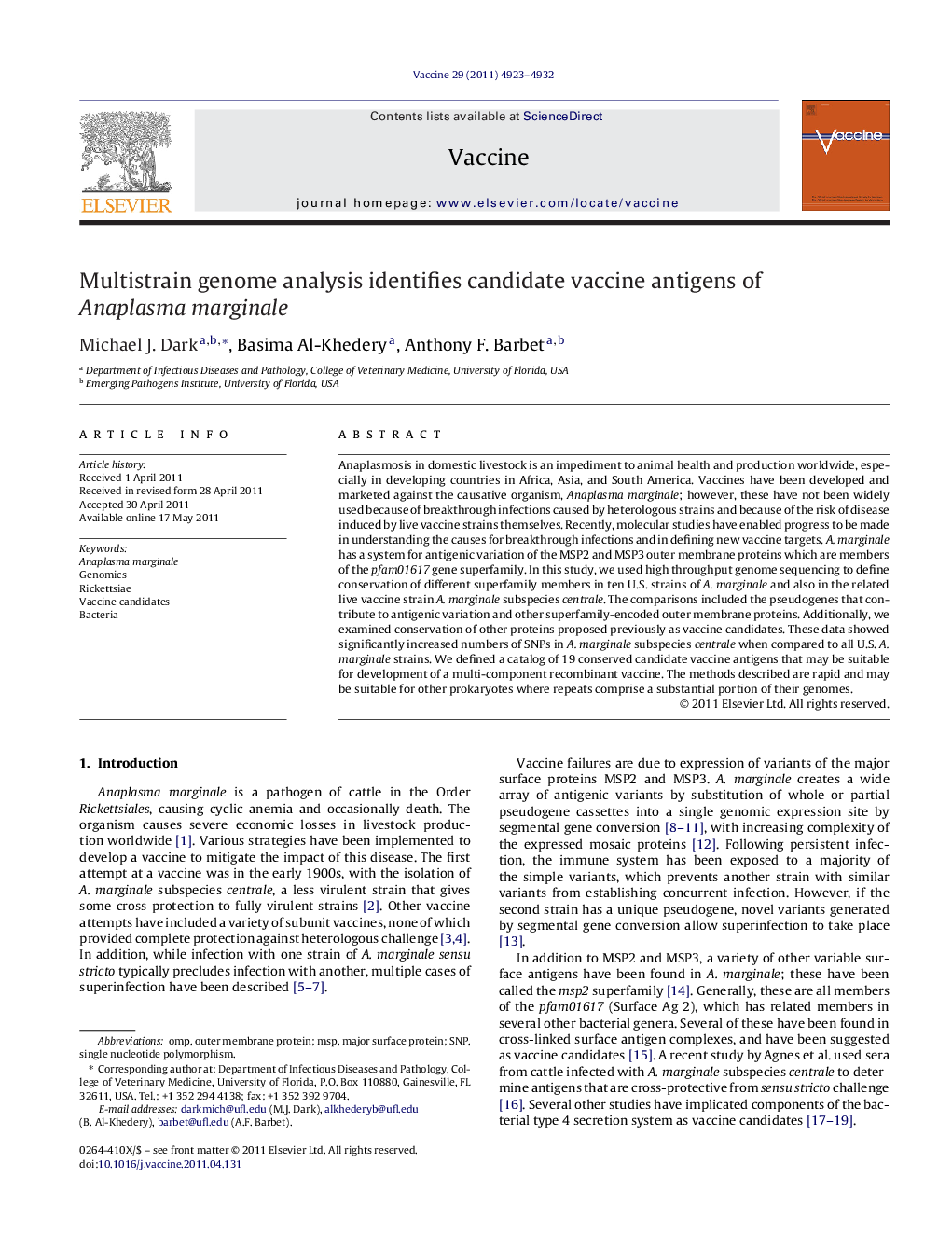| Article ID | Journal | Published Year | Pages | File Type |
|---|---|---|---|---|
| 10969133 | Vaccine | 2011 | 10 Pages |
Abstract
Anaplasmosis in domestic livestock is an impediment to animal health and production worldwide, especially in developing countries in Africa, Asia, and South America. Vaccines have been developed and marketed against the causative organism, Anaplasma marginale; however, these have not been widely used because of breakthrough infections caused by heterologous strains and because of the risk of disease induced by live vaccine strains themselves. Recently, molecular studies have enabled progress to be made in understanding the causes for breakthrough infections and in defining new vaccine targets. A. marginale has a system for antigenic variation of the MSP2 and MSP3 outer membrane proteins which are members of the pfam01617 gene superfamily. In this study, we used high throughput genome sequencing to define conservation of different superfamily members in ten U.S. strains of A. marginale and also in the related live vaccine strain A. marginale subspecies centrale. The comparisons included the pseudogenes that contribute to antigenic variation and other superfamily-encoded outer membrane proteins. Additionally, we examined conservation of other proteins proposed previously as vaccine candidates. These data showed significantly increased numbers of SNPs in A. marginale subspecies centrale when compared to all U.S. A. marginale strains. We defined a catalog of 19 conserved candidate vaccine antigens that may be suitable for development of a multi-component recombinant vaccine. The methods described are rapid and may be suitable for other prokaryotes where repeats comprise a substantial portion of their genomes.
Keywords
Related Topics
Life Sciences
Immunology and Microbiology
Immunology
Authors
Michael J. Dark, Basima Al-Khedery, Anthony F. Barbet,
